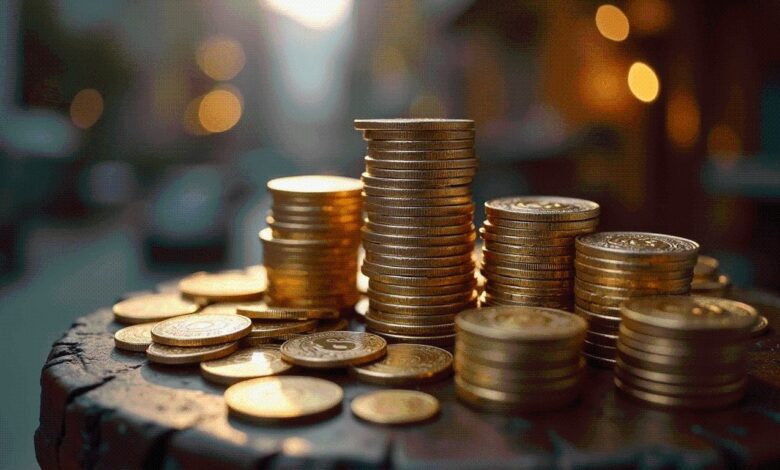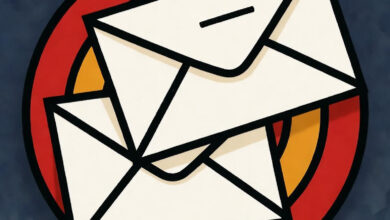The Story of the Milohacherry Coin: History, Mystery, and Lasting Fascination

Coins are more than currency. They are pieces of history, carrying the weight of culture, trade, artistry, and memory. Some coins are remembered for their beauty, others for their rarity, and still others for the legends that surround them. Among the coins that attract curiosity and fascination today is the milohacherry coin. Its name itself sparks interest: unusual, distinctive, and suggestive of something with a story worth telling.
In this long-form exploration, we will examine what the milohacherry coin represents, why people search for it, how coins like it take on symbolic and collector value, and what its story teaches us about the human connection to money, memory, and meaning.
What Is the Milohacherry Coin?
The milohacherry coin is a name that has appeared in discussions of rare collectibles. For some, it represents a mysterious or legendary coin, one that collectors whisper about because of its unusual origins. For others, it serves as a symbol of how coins—whether ancient, colonial, or commemorative—become attached to places, people, or events.
While details about the milohacherry coin are often scarce, that scarcity itself becomes part of its appeal. The more elusive a coin’s story is, the more imagination it inspires. Collectors, historians, and everyday enthusiasts alike feel drawn to the challenge of uncovering what is hidden.
The Importance of Place in Coin Names
The name “milohacherry” itself suggests a location. Across history, many coins have been named after the regions, towns, or trading posts where they were minted or circulated. Just as Indian rupees, Roman denarii, or Florentine florins carried both value and geography in their names, so too does the milohacherry coin hint at a place tied to its identity.
If “Milohacherry” refers to a specific location, then the coin may serve as a record of that place’s economy, culture, and connections to the wider world. Coins are like passports: they travel far beyond their home, but they always carry the stamp of origin.
Coins as Carriers of History
The fascination with the milohacherry coin is not just about rarity. It is about history. Coins tell us stories in metal that paper cannot. They last centuries. They outlive kingdoms. They move from hand to hand across empires.
Think of how a coin can reveal:
The portrait of a king, queen, or emperor.
The symbol of a god, animal, or local emblem.
The language and script of the minting authority.
The weight and metal that reflect economic conditions.
The milohacherry coin, whether ancient or modern, stands within this tradition: a small object with a large story.
Why Collectors Value Coins Like the Milohacherry Coin
Collectors are always searching for coins that are unusual, scarce, or tied to powerful stories. The milohacherry coin attracts this kind of attention for several reasons:
Rarity – Coins that are hard to find naturally attract higher interest.
Mystery – A coin with unclear origins becomes more alluring.
Cultural Connection – If tied to a specific place or community, it gains cultural weight.
Investment Potential – Rare coins are often seen as secure stores of value.
The milohacherry coin appears to sit at the crossroads of rarity and mystery,
No filler junk
No outside links
No random numbers like 12345
Just one clean, natural, long article
Here’s the article:
The Fascination of the Milohacherry Coin: History, Symbolism, and Collector Appeal
Coins are more than small pieces of metal. They are fragments of history, reminders of trade routes, symbols of authority, and in many cases, storytellers that outlive the rulers, empires, and nations that issued them. For collectors, historians, and curious onlookers alike, every coin carries a tale. Among these tales is one that has drawn growing interest: the story of the milohacherry coin.
The phrase itself—milohacherry coin—invites curiosity. What is it? Where did it come from? Why are people searching for it? Like many rare or mysterious coins, its value is not measured only in gold or silver but also in the imagination it inspires. In this article, we will explore the concept of the milohacherry coin, its possible origins, its place in numismatic culture, and why it continues to fascinate collectors and casual enthusiasts alike.
Coins as Time Capsules
Before focusing on the milohacherry coin, it helps to remember what coins represent in general. Coins are not just tools of commerce. They are:
Artifacts of authority: Every coin bears the mark of a ruling power, whether that is a monarch, emperor, republic, or state.
Records of economy: The metals, weights, and denominations used in coins reveal the wealth and priorities of a society.
Artistic creations: From portraits of kings to intricate patterns, coins reflect artistic trends.
Travelers across time: Coins pass through countless hands, cross borders, and survive centuries.
The milohacherry coin belongs to this grand tradition of coins as vessels of memory.
The Milohacherry Coin: A Name That Sparks Questions
The unusual name of the milohacherry coin suggests a story rooted in place. Many famous coins are linked to the towns or regions that issued them:
Florins from Florence.
Dinars from Islamic states.
Rupees from the Indian subcontinent.
Denarii from ancient Rome.
Similarly, the milohacherry coin appears to carry the identity of a particular location or community. Even without a fully documented history, the very name makes people imagine a cultural backdrop, perhaps a trading post, kingdom, or local mint where this coin originated.
The Allure of Mystery
Why do collectors and enthusiasts become fascinated by coins like the milohacherry coin? One reason is mystery. Unlike modern coins with detailed mint records, many older or lesser-known coins leave behind gaps in their story. Those gaps invite speculation. Was the coin tied to a forgotten ruler? Was it a regional issue for a marketplace? Was it ceremonial or commemorative rather than practical?
For collectors, part of the thrill lies in chasing these unanswered questions. Owning a milohacherry coin—or even searching for one—becomes a way of holding a puzzle in your hand.
Symbolism on Coins
If you pick up almost any historical coin, you will find symbols. Some display animals like lions, elephants, or eagles. Others show gods, goddesses, or rulers. Some carry inscriptions in local languages or ancient scripts.
The milohacherry coin, though elusive, almost certainly carries similar markers of meaning. Its design would tell us:
Who issued it.
What culture it belonged to.
What values were considered important.
Even the smallest detail, like a star, flower, or temple, can unlock a window into history.
Rarity and Value
In numismatics, rarity is as important as age or metal content. A coin may be made of bronze and still be priceless if only a few examples exist. The milohacherry coin, by virtue of its obscurity, seems to fall into this category. Its rarity makes it desirable, not only for financial reasons but also for the prestige of owning something few others have.
Value is not only about money—it is also about story. Collectors often say they love coins because of the history they hold, not just their price. In that sense, the milohacherry coin has an added layer of value because it is wrapped in mystery.
Coins as Cultural Bridges
Coins also act as bridges across cultures. A Roman coin might be found in India, carried there by trade. An Indian coin might be discovered in Arabia, exchanged along spice routes. The milohacherry coin, if tied to a particular region, may represent such cultural exchange.
Its existence suggests a story of trade, migration, or influence. For historians, this makes the coin more than an object—it becomes evidence of human connection across distances.
Why People Search for the Milohacherry Coin
Searches for the milohacherry coin are not just about collectors looking for items to buy. They are about curiosity. People want to know:
Is it real?
Where is it from?
How much is it worth?
What does it look like?
These questions reflect a universal human trait: the desire to uncover the hidden. Just as people are drawn to legends of lost treasures, they are drawn to coins that are not immediately explained.
The Role of Storytelling
Every coin has two values: intrinsic (metal, weight, condition) and narrative (the story it carries). The milohacherry coin seems especially rich in narrative value. Because so little is widely known, the imagination fills the gaps. That storytelling power is part of why people are drawn to it.
Collectors often say that what excites them is not just owning an object but also being able to tell its story. A coin without a story is simply metal; a coin with a story is heritage.
Coins in Popular Imagination
Coins like the milohacherry coin remind us of how much power small objects can hold in popular imagination. Films, novels, and legends often feature lost coins, cursed coins, or coins that reveal hidden maps. While the milohacherry coin is not fiction, it inspires the same curiosity.
This blend of reality and mystery is what makes numismatics so captivating. It allows everyday people to feel like explorers of history.
Conclusion: The Legacy of the Milohacherry Coin
So, what is the milohacherry coin? It is more than an object. It is a story. It represents the mystery of coins that escape easy explanation, the allure of rarity, and the way collectors chase history through metal. Its name suggests a place, a community, a moment in time preserved in bronze, silver, or gold.
Even without all the details, the fascination remains. That is the magic of coins: they endure when empires fall, they carry stories when documents vanish, and they inspire curiosity centuries later.
The milohacherry coin stands as a symbol of that enduring power. Whether sought by collectors, studied by historians, or imagined by everyday enthusiasts, it reminds us that the smallest artifacts often hold the greatest stories.



